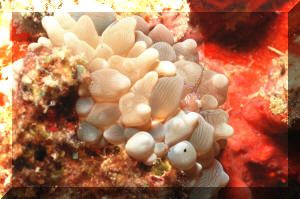|
Related FAQs: Euphylliids/Caryophylliids, Caryophylliid Corals 2, Caryophyllids 3, Caryophyllids 4, Caryophyllid ID, Caryophyllid Compatibility, Caryophyllid Systems, Caryophyllid Selection, Caryophyllid Behavior, Caryophyllid Feeding, Caryophyllid Disease, Caryophyllid Disease 2, Caryophyllid Disease 3, Caryophyllid Disease 4, Caryophyllid Propagation/Reproduction,
Elegance Coral, Elegance Corals 2, Elegance Coral Identification, Elegance Coral Selection, Elegance Coral Compatibility, Elegance Coral Selection, Elegance Coral Systems, Elegance Coral Feeding, Elegance Coral Disease/Pests, Elegance Coral Reproduction, Stony Coral Behavior,
Related Articles: Dyed Corals, Stony/True Coral, Coral System Set-Up, Coral System Lighting, Stony Coral Identification, Stony Coral Selection, Coral Placement, Foods/Feeding/Nutrition, Disease/Health, Propagation, Growing Reef Corals,
/The Best Livestock For Your Reef Aquarium:
Frogspawn, Grape, Anchor, Bubble... and
Elegance Corals, Family Euphylliidae (formerly of the
Caryophylliidae), Pt. 5
To: Part 1, Part. 2,
Part 3, Part 4,
Part 6
|
|
Genus Physogyra Quelch 1884, Pearl Coral. One species. /WA Corals:
meandroid • septa very exsert • corallite walls blistered • bubble-like vesicles
cover septa • long tentacles can cover vesicles
Some authorities debate the family placement of this genus.
| Physogyra lichtensteini Milne Edwards
& Haime 1851. Massive or large plate colonies that are made up
of solid plates. Tentacles open at night. During day, grape-like
vesicles evident, able to be retracted quickly, unlike
Plerogyra. At right, aquarium specimen and partly open
vesicles in the wild. Below, completely open vesicles, closed
colony and massive one showing skeleton Bunaken/Indo. images. |
 
|
Bigger PIX:
The images in this table are linked to large (desktop size) copies.
Click on "framed" images to go to the larger size. |

%20MD.JPG)
%20MD.JPG) |
To: Part 1, Part. 2,
Part 3, Part 4,
Part 6
|
|

